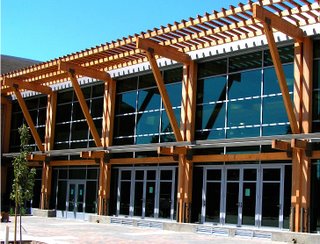 Here's a simple, practical, and efficient way to live a more sustainable life- stop consuming bottled water. Many environmental groups discourage the purchase of single-use water bottles. The San Francisco Dept of the Environment concludes that "Plastic water bottles are bad for human health, degrade the environment, add to global warming, and result in huge amounts of waste and litter. All this for a product that is often inferior to San Francisco's tap water."
Here's a simple, practical, and efficient way to live a more sustainable life- stop consuming bottled water. Many environmental groups discourage the purchase of single-use water bottles. The San Francisco Dept of the Environment concludes that "Plastic water bottles are bad for human health, degrade the environment, add to global warming, and result in huge amounts of waste and litter. All this for a product that is often inferior to San Francisco's tap water."People buy bottled water for convenience and health reasons. For convenience, all it takes is a change of habit. I love my re-fillable bottles which I fill with tap water whenever I leave home. I always have water and don't have the inconvenience of buying water.
Is bottled water a healthier product than tap water? No. Contaminants found in a third of bottled water samples include bacteria, industrial solvents, chemicals from plastic, hormone disrupters, and carcinogens. To improve the taste of your tap water, use a home filter.
The environmental costs of water bottles are huge. The Earth Policy Institute estimates that making bottles to meet the US demand for bottled water requires more than 1.5 million barrels of oil annually, enough to fuel 100,000 cars for a year. Billions of water bottles are discarded each year which can take up to a thousand years to degrade. Recycling can help reduce waste, but that process uses a great deal of resources.
Remember, this one is easy- Carry water in reusable containers, serve water in pitchers at gatherings, and filter your own tap water if desired.









